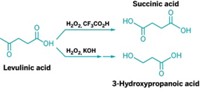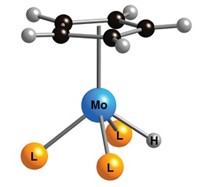Advertisement
Grab your lab coat. Let's get started
Welcome!
Welcome!
Create an account below to get 6 C&EN articles per month, receive newsletters and more - all free.
It seems this is your first time logging in online. Please enter the following information to continue.
As an ACS member you automatically get access to this site. All we need is few more details to create your reading experience.
Not you? Sign in with a different account.
Not you? Sign in with a different account.
ERROR 1
ERROR 1
ERROR 2
ERROR 2
ERROR 2
ERROR 2
ERROR 2
Password and Confirm password must match.
If you have an ACS member number, please enter it here so we can link this account to your membership. (optional)
ERROR 2
ACS values your privacy. By submitting your information, you are gaining access to C&EN and subscribing to our weekly newsletter. We use the information you provide to make your reading experience better, and we will never sell your data to third party members.
Synthesis
Polymer Feedstock Made From Biomass
Method effectively converts fructose to 5-hydroxymethylfurfural
by Mitch Jacoby
July 3, 2006
| A version of this story appeared in
Volume 84, Issue 27

Type "biomass" into your favorite Internet search engine, and you'll uncover sites that focus on methods for converting plant matter into fuels. The idea of motorists pumping their tanks full of fuel made from forestry and agricultural scrap readily grabs the attention of technology watchers. But fuels aren't the only targets of biomass research.
Fine chemicals and valuable intermediates could be made someday from plant sources if efficient and economically sound processes are developed. That day may not be far off, a new study suggests.
Researchers at the University of Wisconsin, Madison, have developed a selective method for converting fructose to 5-hydroxymethylfurfural (HMF), a compound that could serve as a key intermediate for manufacturing polymers, pharmaceuticals, and other valuable products (Science 2006, 312, 1933). The investigation may enable chemical building blocks derived from domestic agriculture to be substituted for imported petroleum products.
HMF and other furan derivatives have been identified as potential substitutes for commonly used petroleum-derived intermediates in the manufacture of polyesters such as polyethylene terephthalate and polybutylene terephthalate. Yet, as Wisconsin chemical engineering professor James A. Dumesic explains, HMF is rarely used in industrial processes due to the material's high cost.
So Dumesic and graduate students Yuriy Román-Leshkov and Juben N. Chheda set out to find cost-effective methods for producing the compound from biomass sources. Through a combination of experiments and computer simulations, the team developed a two-phase reactor system that features key additives or phase modifiers that mediate effective conversion and separation of HMF.
In the new procedure, hydrochloric acid or an acidic ion-exchange resin dehydrates fructose in an aqueous phase that contains dimethylsulfoxide and poly(1-vinyl-2-pyrrolidinone). Those compounds are added to suppress side reactions. The product, HMF, is continuously extracted into an organic phase that consists of methyl isobutyl ketone modified with 2-butanol. The alcohol enhances partitioning between the two phases, the researchers explain.
According to the Wisconsin group, the method can convert 90% of the fructose starting material, is 80% selective in producing HMF, and can be run at up to 50% fructose by weight.
Brent H. Shanks, an associate professor of chemical engineering at Iowa State University, says biomass-derived fuels have gotten a lot of press recently. "But there is a need to develop parallel technologies for producing chemicals from renewable sources," he says. Shanks adds that the work presented by the Dumesic group provides an interesting discovery in that area by demonstrating how phase modifiers can be used to improve the efficiency of HMF production.





Join the conversation
Contact the reporter
Submit a Letter to the Editor for publication
Engage with us on Twitter